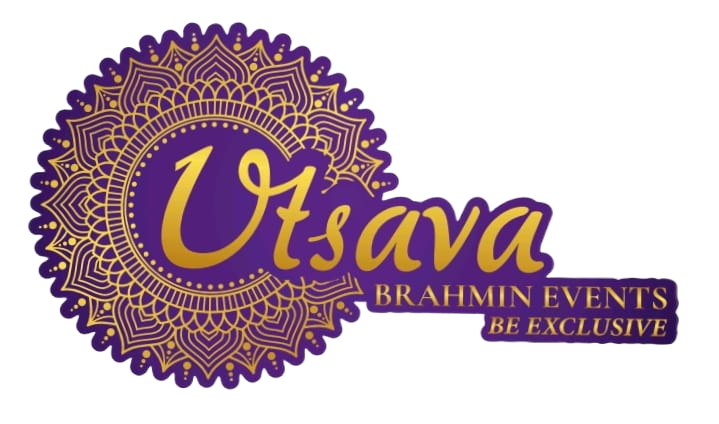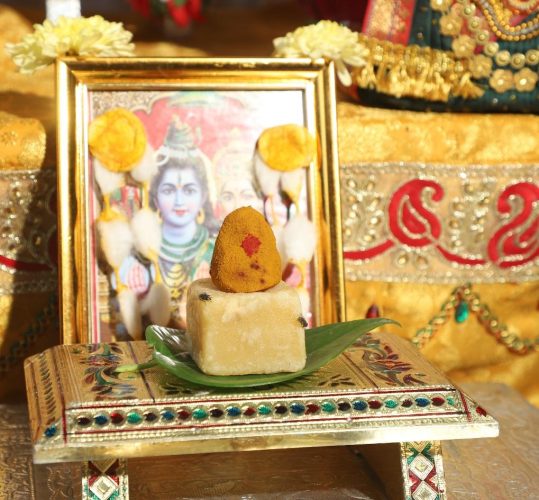Gowri Puja Before Marriage
Gowri Puja Before Marriage
Gowri Puja holds immense significance in South Indian Brahmin traditions, especially among Smartha and Madhwa communities, as an essential pre-marital ritual. This pooja, performed by the bride-to-be, is dedicated to Goddess Gowri, a form of Goddess Parvati, symbolizing purity, devotion, and marital harmony.
Importance of Gowri Puja before marriage:
- Blessings for Marital Harmony: The ritual is performed to invoke the blessings of Goddess Gowri for a long, happy, and prosperous married life.
- Good Fortune: It is believed that the Goddess blesses the bride with good luck, peace, and happiness in her new journey.
- Strength and Virtue: Praying to Gowri helps the bride imbibe qualities such as patience, strength, and love, which are considered vital for a harmonious marriage.
Rituals for Gowri Puja: Traditional and Modern Practices
Gowri Pooja, performed before marriage, has evolved over time, blending simple traditional customs with more elaborate and decorative practices. Here’s an overview of the rituals, highlighting both the traditional and contemporary aspects.
Traditional Rituals – A simple turmeric figurine of Goddess Gowri is prepared as Haldi Gowri:, symbolizing purity and Shiva Parvati photo behind it. The priest invokes the Goddess with mantras, making the idol sacred. The bride’s intention is offered to the Goddess for a harmonious married life.
Baasinga & Mangalya – the wedding ornaments are sanctified during the pooja.
In recent times, Families now decorate five Gowris, adorned with ornaments, flowers, and elaborate setups along with Haldi Gowri. The pooja is performed in grandeur, with vibrant displays and community participation.
Offering five types of scented flowers – Jasmine, Champa, Shevantige, Sungandharaja, and Jaji -along with maraga (leaf) and davana (herb) to the Goddess is believed to invoke divine blessings. These offerings symbolize purity, beauty, love, and prosperity. In wedding rituals, it is said that such prayers bring heartfelt blessings to the bride-to-be, ensuring happiness, good fortune, and a harmonious marriage.
Despite the changes, the core essence remains: seeking blessings for a happy and prosperous marriage
Marada Baagina in Gowri Puja
Moram, made of bamboo, is considered highly auspicious, symbolizing the multiplication of blessings. It is believed that anything placed inside two morams will return in abundance. Before entering the Mantap, the bride-to-be offers auspicious items in the moram to elderly women who have experienced married life. In return, these women bless the bride with happiness and prosperity. The moram represents the rich cultural heritage, making the practice deeply meaningful in the context of the wedding.
Marada Baagina Preparation
- Mora (Moram): These are bamboo or cane trays used for placing the items. Two morams are usually decorated for the ritual.
- Gowri Face Decoration: A symbolic representation of Goddess Gowri is crafted or placed on the decorated morams. Often, this includes turmeric, flowers, and artistic detailing.
Contents of Marada Baagina
The sets typically include five or more of the following auspicious items:
- Turmeric (Arishina) and Kumkum: Symbolize purity and auspiciousness.
- Betel Leaves and Areca Nuts: Represent prosperity and good health.
- Bananas or Other Fruits: Indicate abundance and fertility.
- Glass Bangles: Signify the well-being and marital bliss of women.
- Coconut: Represents completeness and is a sacred offering in Hindu rituals.
- Rice and Toor Dal: Signify nourishment and prosperity.
- Jaggery and Oil: Symbolize sweetness and sustenance.
During Gowri Pooja in wedding, the bride’s mother invites the groom’s mother to participate. The groom’s mother brings pooja items, offers prayers to Goddess Gowri, and blesses the bride for a happy married life. This ritual foster respect and strengthens the bond between the families.
Prominence to Mother-in-law: Special importance is given to gifting the mother-in-law, as this is the first and last time the bride formally offers it to her. In some communities, a baagina is also given to the bride’s mother as a gesture of affection.
Spiritual Significance of Gowri puja before marriage:
The act signifies the bride’s prayers for blessings, prosperity, and strong familial bonds in her new life.
This ritual beautifully reflects the bride’s reverence for tradition and her role in fostering harmony in both families. These baaginas hold cultural and spiritual significance, symbolizing prosperity and blessings.
During Gowri Pooja, it is customary for the women present to create a devotional and joyful atmosphere by singing traditional songs such as:
- Lakshmi Shobhane: A devotional song praising Goddess Lakshmi, invoking prosperity, happiness, and divine blessings.
- Soundarya Lahari: Verses from this hymn, attributed to Adi Shankaracharya, extol the beauty, grace, and power of Goddess Parvati (Gowri).
These songs enhance the spiritual ambiance of the ritual, foster unity among participants, and express devotion to the Goddess while seeking her blessings for the bride’s marital life.
At the end of Gowri Pooja, aarti is performed, and the bride prays to Goddess Gowri for her husband’s long and healthy life. Following this, the maternal uncle ceremonially escorts the bride to the Mantap for the Muhurtham, marking the beginning of the wedding rituals.






